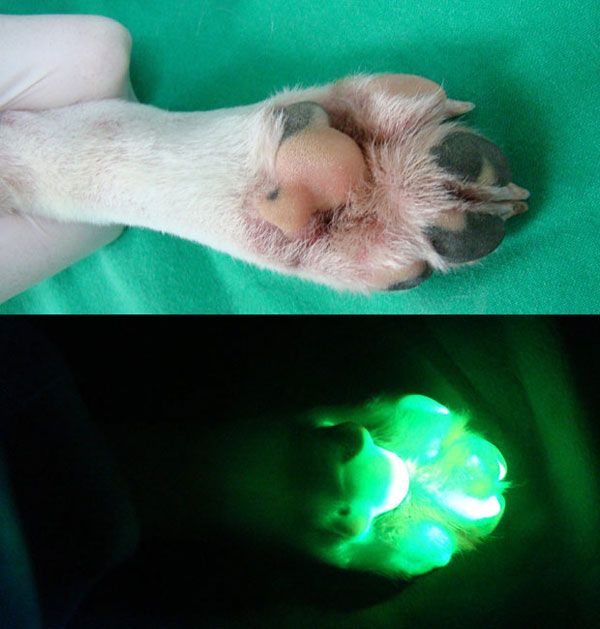Korea successfully created glowing dogs
Korean scientists recently claimed to have created a glowing dog thanks to a cloning technique, which could help find treatments for human diseases such as Alzheimer's and Parkinson's.

The genetically modified "Tegon" dog with the children
at Seoul National University (SNU).Photo: Reuters.
A research team from Seoul National University (SNU) said the " genetically modified hound " named Tegon, born in 2009, will glow green fluorescent under ultraviolet light if possible. doxycycline antibiotics.
After completing a two-year trial, the researchers claimed, Tegon's glowing ability could be "switched on" or "turned off" by adding a drug to its food.
South Korea's Yonhap news agency quoted lead researcher Lee Byeong-chun as saying: "The creation of Tegon dogs brings new perspectives, because the transgenic gene to make glowing dogs can be replaced by inducing genes. making dangerous diseases for people ".

One foot of Tegon in normal light and glow conditions
Green fluorescent under ultraviolet light.Photo: Reuters.
Scientists reason that, because humans and dogs share the same 268 types of diseases, creating dogs that exhibit such pathologies artificially can help support the treatment of diseases. affects people.
According to Mr. Lee, the " Tegon " dog was created using the vegetative cell nuclear transfer technology that the team used to produce the world's first cloned dog (named is Snuppy) in 2005.
The latest discovery by SNU scientists is published after 4 years of research at a cost of nearly 3.2 billion Won (about 3 million USD) for creating genetically modified dogs as well as conducting tests. necessary test.
- Korea continues to successfully clone dogs
- Korea successfully cloned asexual dog
- Dogs glow in the night
- Vietnam successfully implanted glowing fish
- South Korea has more cases of bird flu in dogs
- The controversial habit of eating cats and dogs of the Swiss people
- Inside the dog mirror factory in Korea
- The most beautiful breeds in the world
- The story of the black dog ghost in England
- Hi Dog year, find out the incredibly unexpected facts about this man's
- How to tame the ferocious nature of a hybrid dog
- Dog breeds like to use 2 front legs like boxers
 Why do potatoes have eyes?
Why do potatoes have eyes? 'Tragedy' the world's largest carnivorous life: Death becomes ... public toilet
'Tragedy' the world's largest carnivorous life: Death becomes ... public toilet Tomatoes were once considered 'poisonous' for 200 years
Tomatoes were once considered 'poisonous' for 200 years Detecting microscopic parasites on human face
Detecting microscopic parasites on human face